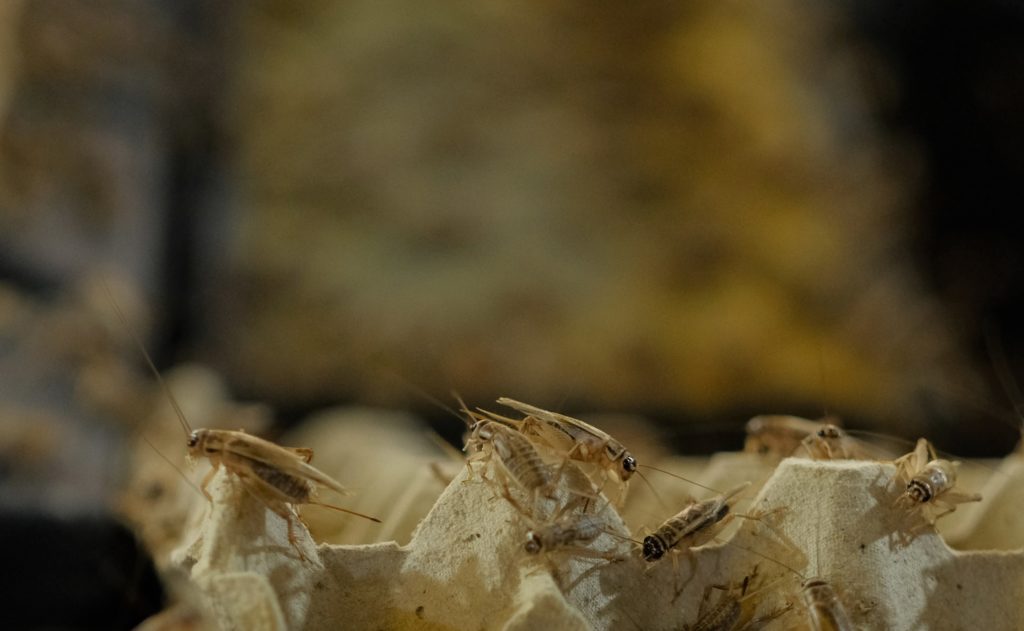An Irish family-owned company has signed a distribution agreement with a Vietnamese manufacturing company, Cricket One, to provide cricket protein to the UK and European markets.
Wicklow-based Willows Ingredients has been a supplier of health ingredients to the human and animal-nutrition sectors across the UK, Europe, Scandinavia, and North America for over 15 years.
New to its menu this year are crickets! But these insects, as a food source, are certainly not new.
In fact, crickets have been the regular diet of more than two billion people, worldwide, and have been safely consumed for over 2,000 years, according to the company.
And, while there is no denying that the common cricket is not a common protein source in this neck of the woods, that looks set to change.
Crickets – third novel food approved
In February 2022, the European Commission authorised a third insect as a novel food – Acheta domesticus, the house cricket. This is in addition to mealworms and locusts, which are approved as novel foods in frozen, dried and powder forms.
What is a novel food?
A novel food is defined as food that had not been consumed to a significant degree by humans in the EU before May 15, 1997, when the first regulation on novel food came into force (Source: EU Commission).
Having recently received novel-food accreditation from the European Food Safety Authority (EFSA), and meeting all Food Safety Authority (FSA) guidelines to supply the UK market also, Cricket One joined forces with Willows Ingredients to pave the path for this alternative protein.
The Vietnamese company combines cricket farming and innovation to produce “high quality and sustainable ingredients for food, beverage, cosmetics, and pet food” it says.
EFSA approval
Seeking EFSA approval is a costly and timely exercise – in the case of Cricket One, circa €200,000 and approximately three years. A dossier must also be submitted, which includes all scientific data to prove the product is safe for human consumption and that it also adds benefits that users can base health claims. Applications for EFSA novel food only have an approximate 40% success rate.
The move towards consuming insects as a source of protein in Europe and the UK comes from a need for change on an environment and climate level, according to Willows Ingredients.
“Consumers are demanding food products that are environment-friendly, and shifting toward companies that care about environmental issues,” explained David Scrivens, managing director and founder of Willows Ingredients.
This is expected to drive increased demand for cricket protein-powder products, he said.
“The projected market size for alternative proteins in 2028 is valued at $126.84 million with a compound annual growth rate of 16.9% from 2022 to 2026, which is probably conservative.
“It is vital that we find sustainable protein and focus on methods that will feed future generations in ways that are less harmful for the environment,” he said.

And this ties in with what Europe is demanding too, especially under its Farm to Fork Strategy, which, it says, sets concrete targets to transform European food systems by 2030.
These targets include a reduction by 50% of the use and risk of pesticides, a reduction by at least 20% of the use of fertilisers, a reduction by 50% in sales of antimicrobials used for farmed animals and aquaculture, and reaching 25% of agricultural land under organic farming.
Compared with the production of beef, pigs, and chicken as protein sources, the production of crickets requires less of everything, according to David.
Cricket-protein production requires less feed, less land, less water, less time and it produces fewer GHGs, he said.
According to David, demand for cricket protein outside of Asia is currently strongest within the pet food and nutraceuticals sectors but if the US and North American trend is replicated here, it won’t stay that way.
“In the US and North American markets manufacturers in the bakery and snacks industry are focussing on offering products with cricket protein powder.
“Products such as cricket nutritional bars, cricket pasta, cricket burgers, and other cricket-based products are making a robust presence in these markets, it is only a matter of time before we see Europe following suit.”
Meanwhile, Willows Ingredients is keeping a close eye on another alternative ingredient – the high-in-protein and high-in-fat black soldier fly.
“It’s of particular interest for the pet-food industry currently and we will be ready for the demand,” David said.
